TECO Manatee Viewing Center in Tampa
The Tampa Manatee Viewing Center is one of the best places to see manatees in Florida.
The manatee center is located at the Big Bend Power Plant, also known as the TECO Power Plant, in Apollo Beach, Florida.
During cold weather, the TECO power plant attracts countless manatees, and many other forms of wildlife.
Wildlife is attracted to the pool of warm water, which is discharged from the power plant’s water cooling system.
The power plant is essential to Tampa’s manatee population because they need a source of warm water to survive during Florida’s winter months.
Although they often look chubby, manatees have very low amounts of body fat, and are not able to warm themselves in cold water.
When Florida’s water temperatures drop below approximately 68 degrees fahrenheit manatees must seek safety in a warm water refuge.
Without warm water manatees can be injured, or even die from a condition known as “Cold stress”. Historically manatees sought refuge in natural warm water sources like Florida’s springs.
Sadly, access to many natural warm water refuges have been cut off due to human interference, dams, waterfront real estate development and other environmental destruction.
Location
The TECO manatee center is located at 6990 Dickman Rd, Apollo Beach, FL 33572
Manatee viewing is one of the best things to do in Florida’s winter, when it’s too cold to swim. If you have the chance it’s a great place to visit!
Manatees are fascinating animals, and it’s well worth the chance to see so much of Florida’s nature up close.
The manatee viewing center is a great way to teach kids about nature, and help get them engaged with science.
It’s exciting to see such a lovable, strange animal up-close. Manatees are very different from anything most people have seen before.
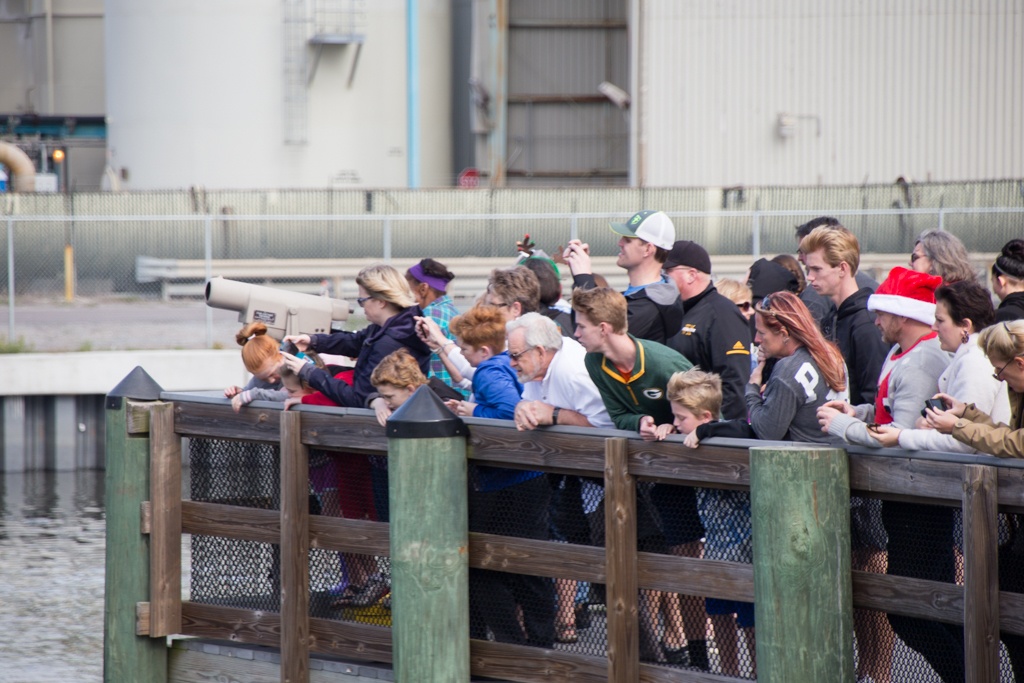
Although manatees are the main attraction at the TECO center, there are other fascinating types of wildlife, as well.
Many different species come to congregate in the warm water discharge areas.
Large spotted eagle rays sometimes launch themselves out of the water, and into the air. Sharks can also be seen as they splash around and hunt giant fish who live in the powerplant canal.
There is also a “wet touch tank” where visitors can have hands-on encounters with rays and other marine life.
Threats to Manatees
Today, coal fire-fired power plants are being decommissioned.
This is great for many reasons. But, it’s also created a challenge for those who protect florida manatees.
Many manatees depend on the power plant for warm water, and many of their natural warm-water refuges, like springs, are no longer available.
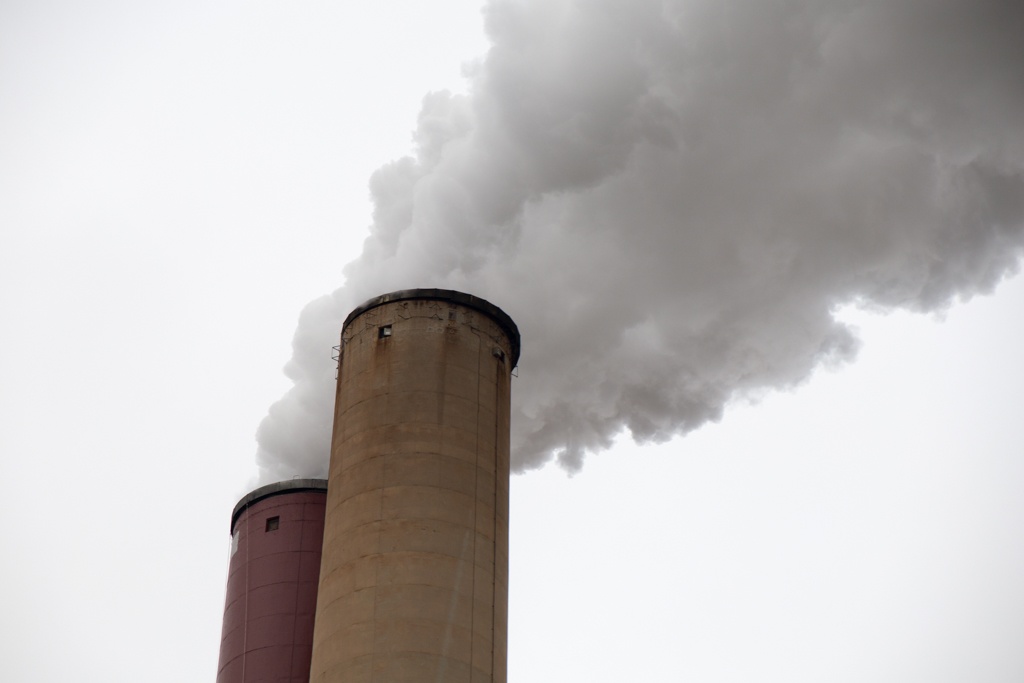
The TECO power plant is one of several power plants around Florida which provide sanctuary for manatees.
Who Should Visit?
Almost everyone who visits the manatees will have a great time, and will be pleasantly surprised.
It would be a great trip for anyone who’s looking for fun, free things to do in Tampa.
For many families living in Tampa, the manatee viewing center is an annual holiday tradition. Even on Christmas Eve, the parking lot overflows, as volunteers direct excess traffic.
Many folks also like to stop off at the manatee to stretch their legs, as they drive north or south on I-75.
Families and individuals with mobility issues will find that the viewing center is a nice, easy and accessible way to experience nature.
Visiting with Kids
If kids are old enough, it could be a great introduction to different science topics, like:
- The importance of environmental protection
- Natural selection, evolution and adaptation
The West Indian manatee (Trichechus manatus) is believed to have evolved from a four-footed, plant-eating land mammal more than 60 million years ago. Its closest modern land relative is the elephant, hyrax and aardvark
Source: TECO Manatee Viewing Center
The Best Time to Visit
Normally, the center is open during Florida’s colder winter months, from November 1st until April 15th. It’s closed on Christmas Day and New Years Day.
Hours and availability can vary. Be sure to check the official website for updated hours and availability before you go!
What’s the best time of day to see manatees?
As with most wildlife, the morning is generally the best time to see manatees.
Outside air and water temperatures are usually at their coldest in the morning, and manatees body temperatures will be at their lowest.
Because they need to warm up, manatees are likely to be more active in the early morning, and are more likely to be gathered in predictable locations, around warm water sources.
It is also good to look for manatees after winter cold fronts. A park ranger told us it can take approx. 3-12 hours for manatees to reach warm water sanctuaries after a cold front.
How can you tell if a manatee is nearby?
If you spend enough time around the water in Florida, you’ll learn to listen for the sound of a manatee’s exhale. It sounds like a deep exhale from a human, or like the sound of a person clearing a snorkel.
Another great way to see manatees is to look for signs on the water surface.
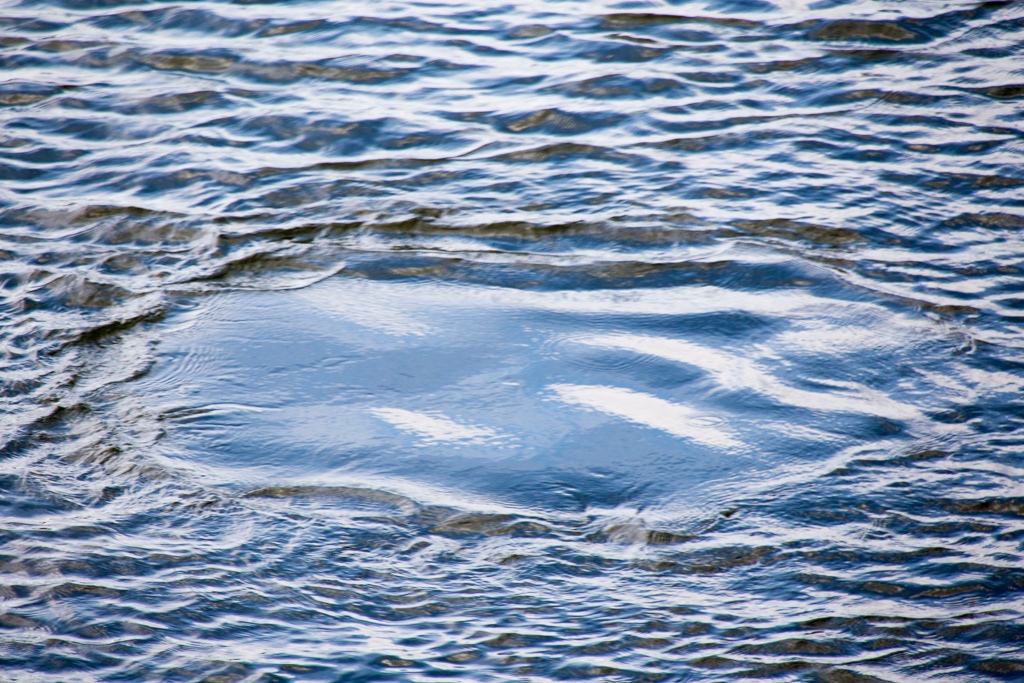
When manatees lay on the seafloor, they produce a strange looking circle pattern, which is visible from above.
As they swim, you can often see slight, consistent and rhythmic surface water disturbances from their tail movements.
If you want to see manatees, be sure to wear polarized sunglasses and a hat. Both will help your eyes see below the surface of the water.
A polarized camera lense also helps cut through the water’s glare, and may give you a better photo.
Of course, if you’re in the water with a manatee –safely, and from a respectful distance– you’ll get the best photo opportunities.
If you have a choice, sunny days with clear, blue skies are best for manatee viewing. It makes a big difference!
When the sun’s out, it’s easier to see down into the water.
Cloudy, overcast skies create darker conditions, and the grey reflection makes it more difficult to see into the water.
Coastal Habitat Trail
If the weather is chilly –which is the best time to see manatees — you can warm up with a hike around the TECO viewing center property. There is a mile-long nature walk through coastal habitat.
Interesting informational signs give perspective into the surrounding nature. The nature trail eventually leads to a 50 foot tall wildlife observation tower.
Be sure to plan ahead. The TECO site advises that there are no restrooms on this part of the property, and you should consider bringing good shoes because it’s a long walk.
Because almost all of the fun at TECO manatee viewing center is outside, be sure to bring suitable winter clothing for Florida’s winter.
Great Florida Bird Trail
The natural habitat on the TECO property is officially designated as part of the Great Florida Birding Trail.
You’re likely to see a wide variety of diving and wading bird species, including the regal Brown Pelican and Double-crested Cormorant.
Often, the main manatee viewing platforms can get crowded. If you need a bit of breathing room, consider walking around other sections of the TECO property.
Tampa Bay Estuary Boardwalk
Be sure to check out the well maintained, handicap accessible (ADA Compliant) boardwalk.
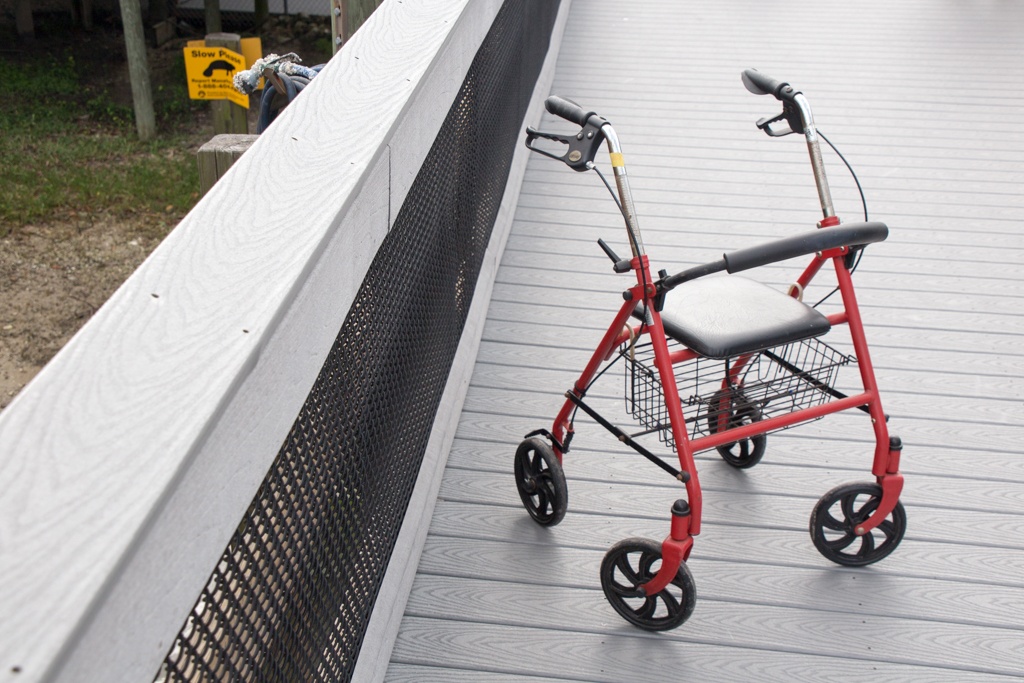
The boardwalk runs parallel to the power plant’s warm water discharge zone for about 900 feet, and gives more chances to see estuary habitat and wildlife.
You’ll see giant fish lingering and hunting in the shallows, including spotted sea trout, snook, tarpon, and schools of shoaling mullet.
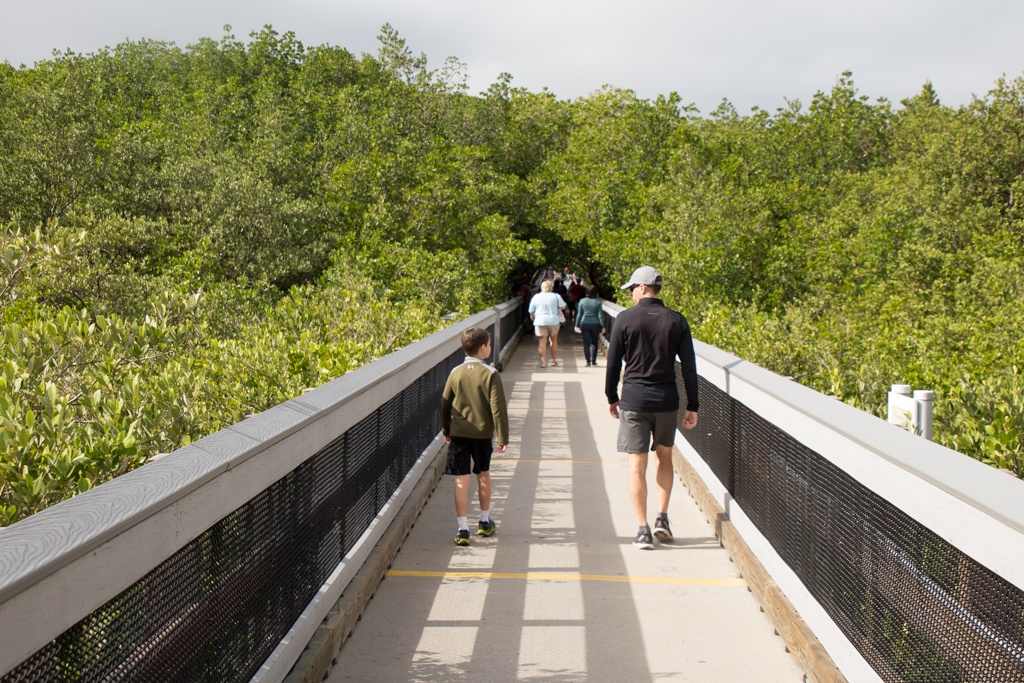
Part of the nature walk passes through dense mangrove forest. This is awesome because it gives an up-close view of vitally important coastal vegetation.
This is a great conversation starter for kids, and a chance to reflect on the importance of protecting Florida’s environment.
The nature trail is open from November 1 until April 15, from 10 am. to 4 pm.
It’s open until 3pm on Christmas Eve, and is closed on Christmas Day and Easter.
Be sure to check the official hours before going, or making plans.
Other places to see manatees near Tampa Bay
The best place to find manatees really depends on the weather.
The best time to see manatees is in the winter. When the water is cold, they’re easier to find because they gather in predictable locations.
In the summer, manatees are harder to find because they spread out to forage on seagrass.
When the water is warm, they have no reason to gather near warm water sources, so manatees can go anywhere. Some manatees have been found as far north as Cape Cod, Massachusets!
In warm weather I often see manatees on the beaches near Anna Maria Island, Coquina Beach and Longboat Key. Beer Can Island is another good place to see them during warm weather.
Swimming with Manatees
It is usually illegal to swim with manatees because they are a protected species. But, there are a few places in Florida where it is possible to get in the water and swim with manatees.
You should know, though, that swimming with manatees is probably never an ethical thing to do, if you care about their long-term survival.
Many marine biologists say that that although it’s good that people love manatees, swimming with manatees should not be allowed.
Human contact changes manatees’ natural behavior. It may condition them to approach humans, or boats, which can subject them to deadly propeller cuts, or cause them to be run over by boats.
Many “Swim with the manatee” tours are also run in irresponsible ways. Tourist swimmers often splash, chase, and even try to ride manatees, which can force manatees to leave their warm-water refuges.
Especially in cold weather, the loss of a warm-water refuge can be a death sentence.
Even minor interactions may create long-term problems for the already threatened manatee.
If you choose to swim with manatees, be sure that you do it as responsibly as possible. We all love manatees; don’t contribute to long-term harm for the animals.
- Keep a safe and respectful distance from the manatees.
- Do not splash around, or do anything to scare them.
- Be extra careful not to disturb the manatee’s natural behavior.
- Never try to touch a manatee, or chase them.
Manatees have fragile instincts, and behaviors. If they become accustomed to humans they become less afraid of boats and other dangers. Many manatees have scars on their backs from being cut by boat propellers.
Petting manatees conditions them to human presence, which hurts their long-term survival. It makes it more likely that manatees will be injured in the future, or may die from cold water stress syndrome. Please don’t do it. Let’s all keep wildlife wild!
Manatees are very sensitive to their environment. If humans make a manatee feel uncomfortable they may leave the area and never return. If this happens, they can be left without a warm-water source, which they need to survive. So, never crowd around a manatee, or give it any reason to feel afraid.
Places to See Manatees in Florida
In the winter, there are several locations where you can reliably see manatees.
Manatees’ migratory behaviors display a trait known as “High site fidelity”. Fidelity means loyalty — they return to their favorite warm-water spots every year.
Manatees even teach their offspring where to find warm water, which is why they gather in such large groups. That also means that when you find a good manatee spot, it remains a good spot because they, and their offspring, will return for the rest of their lives.
Crystal River
Crystal River is just a short day trip from both Orlando and Tampa. It’s one of the best places to find manatees in the world, especially Three Sisters Spring.
The entire town of Crystal River seems to have rallied around manatees, and the economic boost they bring to the small town and sleepy region.
You can also see manatees in other places around the state.
Chassahowitzka River
The Chassahowitzka River is one of the best places to see manatees in Florida! It is close enough to Tampa and Saint Petersburg for a long day trip.
The Peanut Island Snorkeling Lagoon
Manatees sometimes make their way into the warm, shallow and protected waters of the Peanut Island Snorkeling Lagoon. The water is very calm, and provides a nice, safe place for them to rest, away from dangerous boat traffic and propeller injuries.
Just south of Peanut Island, the famous Manatee Lagoon is one of best places to see manatees manatees. There, they gather outside the warm water discharge vents of the FPL power plant.
There is a great interpretive center, which has many opportunities to learn about manatees and other marine life. Much of the center is indoor, and it has a covered balcony from which you can see manatees.
Again, try to visit on a cold, clear, sunny day. Clouds and rain make it difficult to see below the water’s surface.
Florida Springs
Manatees love Florida springs, and they can be a great place to reliably find manatees in the winter! Many springs around the state become winter sanctuaries for manatees who must find warm water for their survival.
